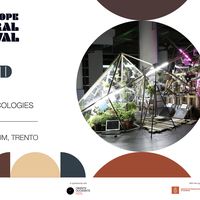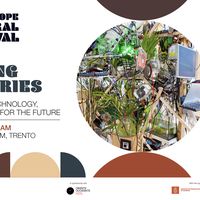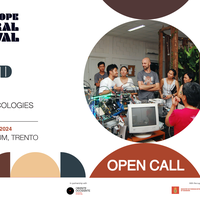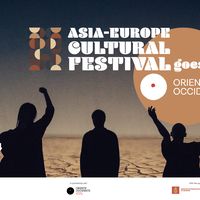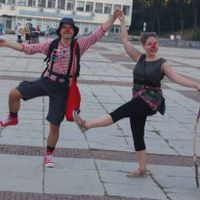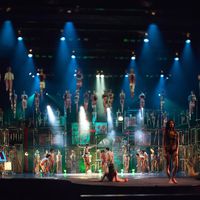Asia-Europe Cultural Festival | Interview with Biomodd
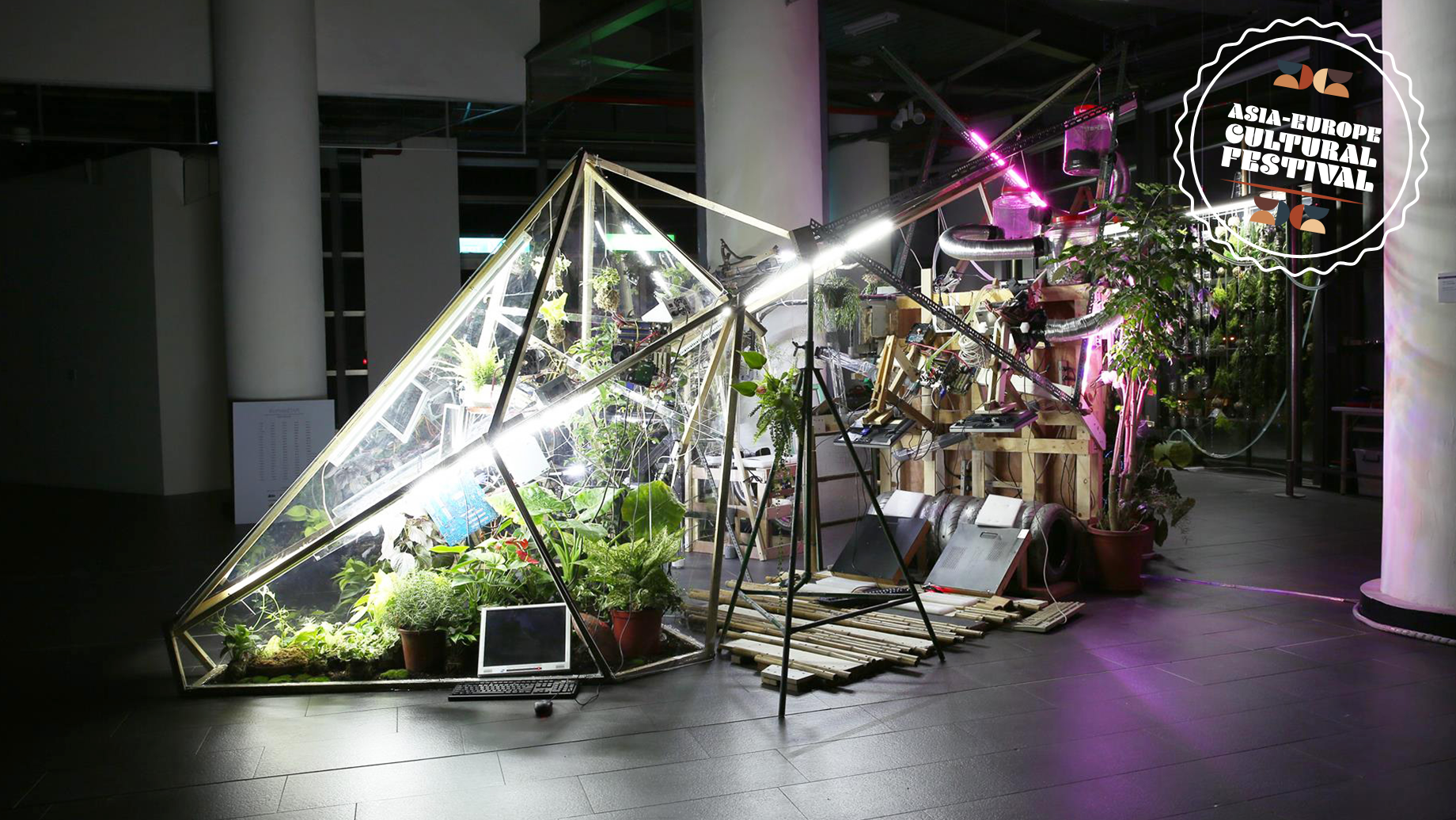
The Asia-Europe Cultural Festival is a public arts festival that celebrates the artistic diversity of Asia and Europe and promotes dialogue and exchange amongst artists from the 2 regions. In 2024, the Festival makes its debut in Italy from 30 August to 7 September, collaborating with local dance festival Oriente Occidente.
We speak with the duo behind BIOMODD [TTO15], Dr Amy Holt and Dr Diego Maranan, members of SEADS (Space Ecologies Art and Design) network, a global and transdisciplinary collective. BIOMODD [TTO15] will take place at MUSE Science Museum in Trento, Italy. Thanks to an open call, local participants will work with the artists to create a new iteration of Biomodd.
Central network interior ecosystem of Biomodd [NYC4], USA, 2013 | |
| 1. Diego, the SEADS (Space Ecologies Art and Design collective) is a global network of engineers, artists and activists that have come together for over 40 projects worldwide; as co-founder of SEADS could you share with us what the initial vision for the collective was and how its developed over time? | |
| [Diego] The collective started from the loosely-knit community of individuals who had participated in different Biomodd projects that my SEADS co-founders and I (Angelo Vermeulen and Pieter Steyaert) had been doing over the years, in different parts of the world with different collaborators and host institutions, starting from the very first Biomodd at the Ohio University, which was led by Angelo in 2007. The core vision of SEADS has always centred on transdisciplinary creative work in art and science, while other important themes and approaches –such as the emphasis on futures literacy, our engagement with space science, and our adoption of old school hacking ethos–has emerged as the collective has grown and evolved. I think the idea has been for the collective to be broadly international and representative of a wide range of interests, backgrounds, and viewpoints. The fact that we are a distributed collective has presented both opportunities and challenges in terms of logistics, communication, and creative collaboration. Currently, we maintain a simple structure for organization, communication, and collaboration: a very small coordination team of volunteer administrators and managers; a larger collective group who work on SEADS projects; and a far larger network of individuals who are invited to meet up online once a month as part of a monthly seminar series. - | |
Biomodd [LBA2], Community Workshop, Philippines, 2009 | |
| 2. Being a part of a collective whose projects constantly draw on the relationship between art and science, can you share some insights on how collaborations between artists and scientists are built and maintained? | |
| [Amy] We tend to build our collaborations around shared visions and goals whilst trying to be mindful of one another’s backgrounds and experiences. We maintain these relationships via regular interactions, to discuss ongoing projects and the various work that we are all involved in. I would say that having a flexible and adaptable attitude helps with the fluid nature of our collaborations, and having a mutual respect for the others we work with helps to ensure that the diversity of the individuals involved in a project adds value to the end-product or process we are trying to create. - | |
Biomodd [LBA2], Installation, Philippines, 2009 | |
| 3. Diego, Biomodd has seen many iterations across the past decade, could you share with us what the origins of Biomodd are and what inspired the initiative to make Biomodd the collaborative community-engaged project it has grown into today? | |
| [Diego] Biomodd was the brainchild of artist and scientist Angelo Vermeulen. The very first Biomodd, Biomodd [ATH1], was initiated by Angelo during an artist residency at The Aesthetic Technologies Lab at Ohio University's College of Fine Arts in Athens, Ohio between September 2007 and January 2008. It was the first time that heat originating from computer electronics was used to boost the growth of an enclosed ecosystem. When I first came across Biomodd, I was immediately struck by the complexity and elegance of its multi-system symbiosis. With the support of my institution, the University of the Philippines Open University, I invited Angelo to build the next iteration of the project in the Philippines. Because the bioarts scene (and certainly the bioarts x technology scene) in the Philippines at that time could at best be described as nascent, and because I myself was somewhat of an outsider in the visual arts scene in the Philippines, it took a while to mobilize support or interest from the major galleries and cultural institutions. We ended up crowdsourcing talent and support to a great extent in order to make the project possible. When we finally exhibited Biomodd [LBA2], we listed over a hundred co-creators, contributors, and supporters in the final acknowledgement board. In short, Biomodd [LBA2] only happened because of the widespread mobilizing and integration of intellectual, cultural, and social capital. I think the path that Biomodd took from [ATH1] to [LBA2] traced a trajectory that since then tended to center on collaboration and community engagement. - | |
| While editing the interview we reached out to Angelo Vermeulen, another co-founder of SEADS to ask him about the concept of BIOMODD back in 2007. | |
| [Angelo] I had been experimenting for a number of years bringing together technology and biology into art installations. I also had a strong interest in gaming culture and its various subcultures, one of which was case modding, the practice of transforming computer cases into visually elaborate pieces. I merged all of these interests and that became the core idea of Biomodd. Since gaming culture is a very social culture with very active online communities, I believed it to be the right moment to start experimenting with co-creation and build the first Biomodd as a community effort. My overarching interest was to create very dynamic art, 'living art' that had a life of its own - as a statement against the more official contemporary art scene with its obsession with artist deification, art market politics, and institutional gatekeeping. - | |
_xVIuoK8.jpg) Biomodd [LBA2], transporting components, Philippines, 2009 Biomodd [LBA2], transporting components, Philippines, 2009 | _8BnnAvV.jpg) Biomodd [LBA2], first exhibition, Philippines, 2009 Biomodd [LBA2], first exhibition, Philippines, 2009 |
| - | |
| 4. Amy, Biomodd [TTO15] is a project with multiple critical components, from the participants of the workshop to the physical components of the installation, to even the audiences who will visit the installation in the MUSE Science Museum of Trento, Italy. Could you elaborate on how the various components, from the organisms to the robotics to exhibition audiences, interact with each other to create the work? | |
| [Amy] Workshop participants are integral to the creation and maintenance of all Biomodd installations. They bring diverse skills, including art, science, engineering, and design and collaborate to build the physical structure, integrate biological elements, and program robotics. Plants may be monitored and maintained by automated watering systems, and large tanks of algae can be used to remove heat from the computer’s central processing unit. The core concept of Biomodd is symbiosis, where biological and technological components coexist and support each other. However, this collaboration is also designed to be a learning process, which will emphasize community and shared knowledge. The aim is that the final physical creation will be both functional and aesthetically appealing. - | |
Biomodd [RSL9], Installation, Belgium, 2016 | |
| 5. Engagement with the community is a key aspect of the project, particularly in how the constant variables of e-waste and living organisms are brought together. Is there a fixed framework that still allows freedom for inputs and ideas brought from the participants? Can you share more about how the resulting iteration of Biomodd is shaped by the types of participants you bring into the workshops? | |
| [Amy and Diego] Over the years, we have evolved a framework that centres on a few workshop-type activities around which participants are still able to work with a lot of freedom. This basically consists of the requirements to create the installation piece, which calls for the use of e-waste, living organisms, and an interactive computer game element. These activities present opportunities for participants to temporarily step out of their professional boundaries. This allows individuals to bring their own ideas and unique set of skills to each Biomodd project, which means that each Biomodd created is unique. At each Biomodd location, different participants bring something different to the table as part of the co-creation process. In the Philippines, one participant introduced aquaponics to the installation. In Slovenia, another participant (whose mother was a nurse) brought syringes and IV drip bags and used them in a unique way to create a watering system for plants that were difficult to access, a practical solution that was also a poetic reimagination of caring relations between people and plants. - | |
_photo%20by%20Angelo%20Vermeulen_ySl7Q66.jpg) Biomodd [MRBw], Slovenia, Community Workshop, 2010 Biomodd [MRBw], Slovenia, Community Workshop, 2010 | 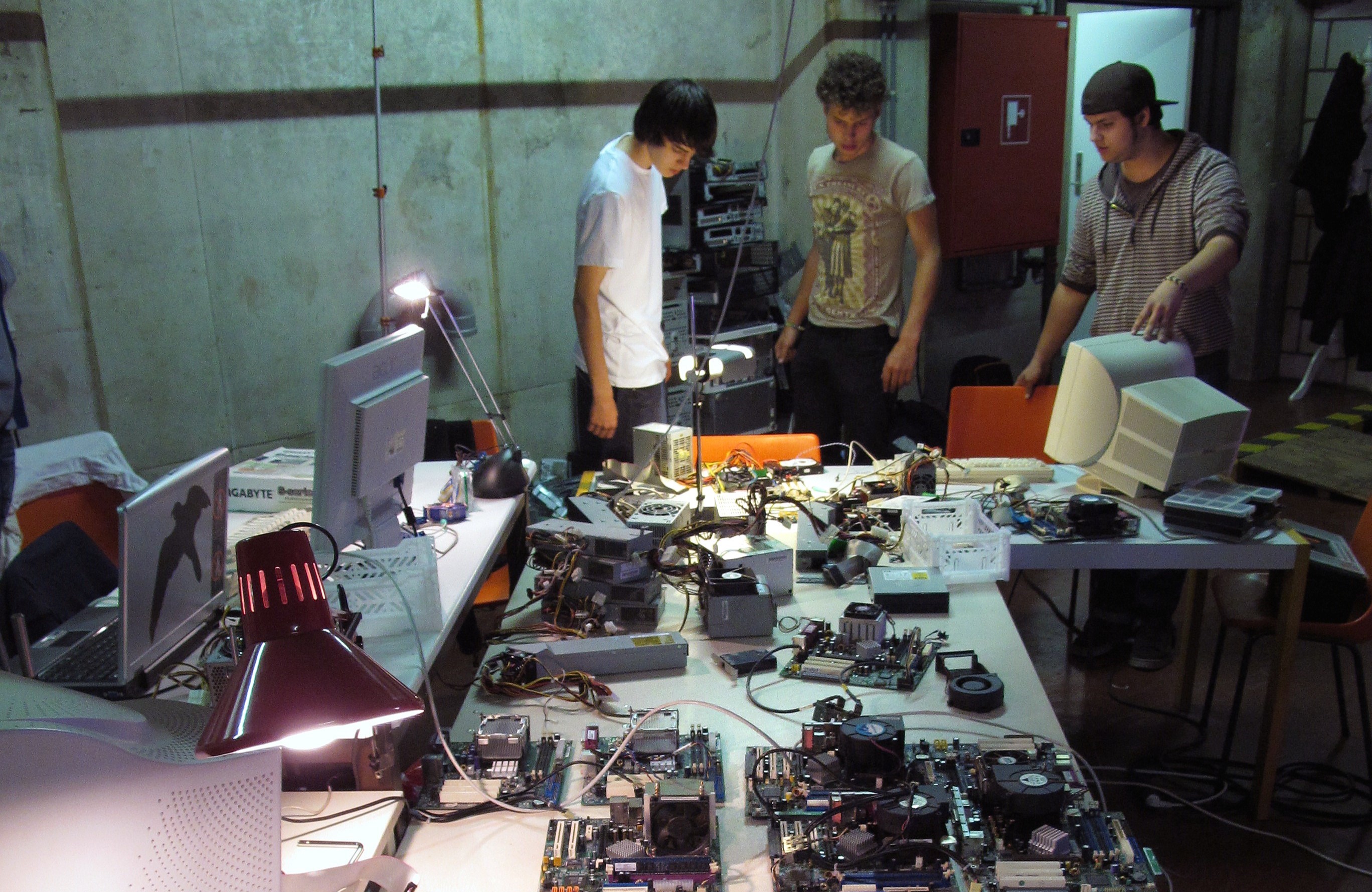 Biomodd [SNKw], Belgium, Community Workshop, 2010 Biomodd [SNKw], Belgium, Community Workshop, 2010 |
| - | |
| 6. In an ever-changing world defined by the pressing global challenge of climate change and environmental sustainability, the intersection of art, technology, and ecological advocacy has become increasingly vital. How can we capitalise on the transformative power of art to empower communities to shape their own futures? | |
| [Amy] Community engagement is key. Exposing people to art and artistic practices can allow them to engage in creative processes that can help them feel heard and express their opinions and feelings on a variety of topics. Working with local community groups to offer workshops can help people to develop new skills and to encourage creative thinking, as well as allowing them to question the status quo of society. Exploring art in a community setting can help to foster stronger bonds within a community, and even allow members to address local issues such as their environment or cultural heritage. [Diego] The future looks different depending on your perspective. Mainstream media often presents meticulously crafted visions of the future, rarely allowing the wider public, especially those on the margins of power, influence, or wealth, to participate. Art and practices like counterfactual thinking and speculative design can empower communities to create their own images of the future. Singapore-based curator Duncan Bass and I discussed how speculative design has fallen out of fashion in contemporary art. I argue that it should not be dismissed, particularly in the Global South, where the speculative and counterfactual can help us shape our own futures, instead of relying on images from centers of power and culture. - | |
Find out more here:
- Roundtable Discussion featuring Amy, Diego and other engaging speakers discussing sustainability and the convergence of art, technology and nature.
- Workshop Open Call - Be a part of the co-creation of Biomodd [TT015]
- Visit the installation - Join us at the Asia-Europe Cultural Festival 2024!
About the Interviewees
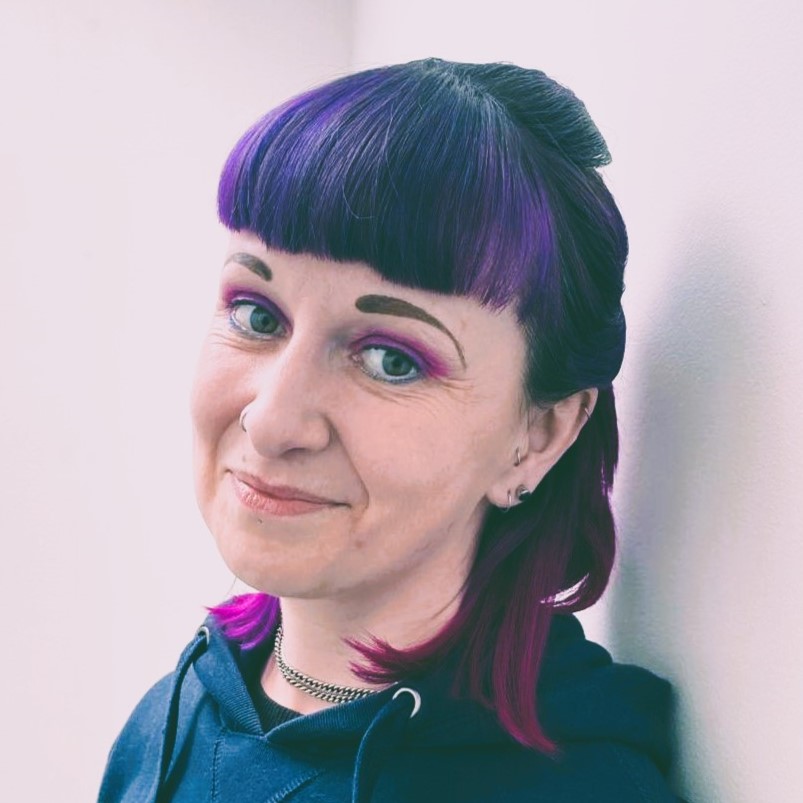 | - | Dr Amy Holt is a bioscientist and artist who holds a Ph.D. in molecular immunology and has over a decade of experience in the field of immunology and microbiome research, where she worked on the development of live biotherapeutics for the treatment of autoimmune diseases and cancers. She is a graduate of the International Space University's Master of Space Studies program, and she has worked for the last year as part of a company helping to design a new astronaut training program for a governmental organisation. Dr Holt is cultivating a practice in the arts that uniquely builds on her science background. She serves as the community manager and is part of the coordination team of the international artist collective, SEADS (Space Ecologies Art and Design). This role allows her to explore the advantages of transdisciplinary approaches within collaborative artistic ventures. Her creative interests lie in exploring the intricate interplay between the natural world, technology, and themes related to identity and transhumanism. |
| - | ||
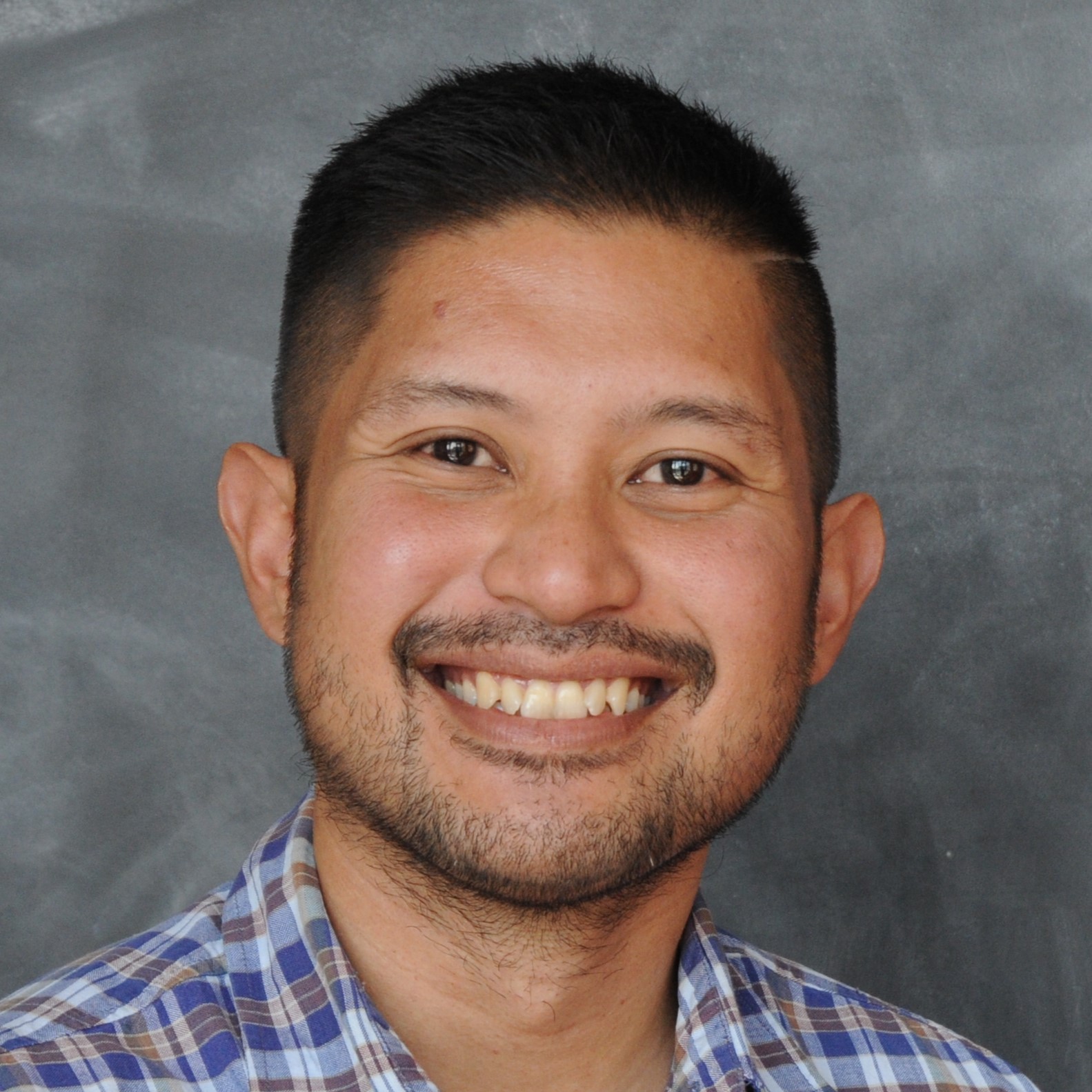 | - | Dr Diego Maranan is a transdisciplinary artist, designer, and researcher who investigates how technologies can help us reimagine and reconfigure our relationship with the environment, with other people, and with ourselves. His work ranges from co-creating socially engaged large-scale art installations, to designing wearable technologies for wellbeing and creativity, to building and managing creative, research and educational programs that contribute to sustainable development goals. He is currently an Associate Professor and Dean of the Faculty of Information and Communications Studies at the University of the Philippines Open University, and the Deputy Director for Research of the University of the Philippines Center for Intelligent Systems. He also functions as a principal of Curiosity, a Manila-based design strategy firm that helps businesses, NGOs, and government design meaningful services, and was an adviser for WeDpro, a feminist nonprofit that empowers marginalised women and youth in the Philippines. Dr Maranan co-founded and actively coordinates SEADS, an international transdisciplinary network of artists, scientists, engineers and activists who reimagine and reshape the future through critical inquiry and hands-on experimentation. |
| - | ||
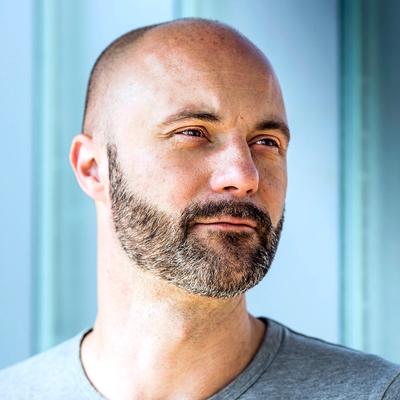 | Dr Angelo Vermeulen is a space biologist, computational designer, complex systems engineer, and artist. He holds a PhD in developmental biology and ecology from KU Leuven. Vermeulen co-founded SEADS (Space Ecologies Art and Design), alongside Diego Maranan and Pieter Steyaert. He was named Belgian Tech Pioneer in 2017 (De Tijd), received fellowships in the US (TED, Parsons School for Design), and has been awarded for his transdisciplinary creative work. To date, he has written over 50 publications covering his research in art and science. | |
Concept and photos: SEADS (Space Ecologies Art and Design)
In collaboration with: MUSE Science Museum of Trento
The event is part of the Asia-Europe Cultural Festival 2024, organised by ASEF in partnership with Oriente Occidente with the financial support of the European Union and the Ministry of Foreign Affairs of Denmark.
For the full programme, CLICK HERE.
Similar content
from - to
30 Aug 2024 - 07 Sep 2024
from - to
01 Sep 2024 - 01 Sep 2024
posted on
19 Jun 2024
from - to
30 Aug 2024 - 07 Sep 2024

_photo%20by%20Angelo%20Vermeulen_ehbinJX.jpg)
_no%20photo%20credits_6qQZI7p.jpg)
_0v57cIh.jpg)
_photo%20by%20Angelo%20Vermeulen.jpg_c17GF0g.jpg)
